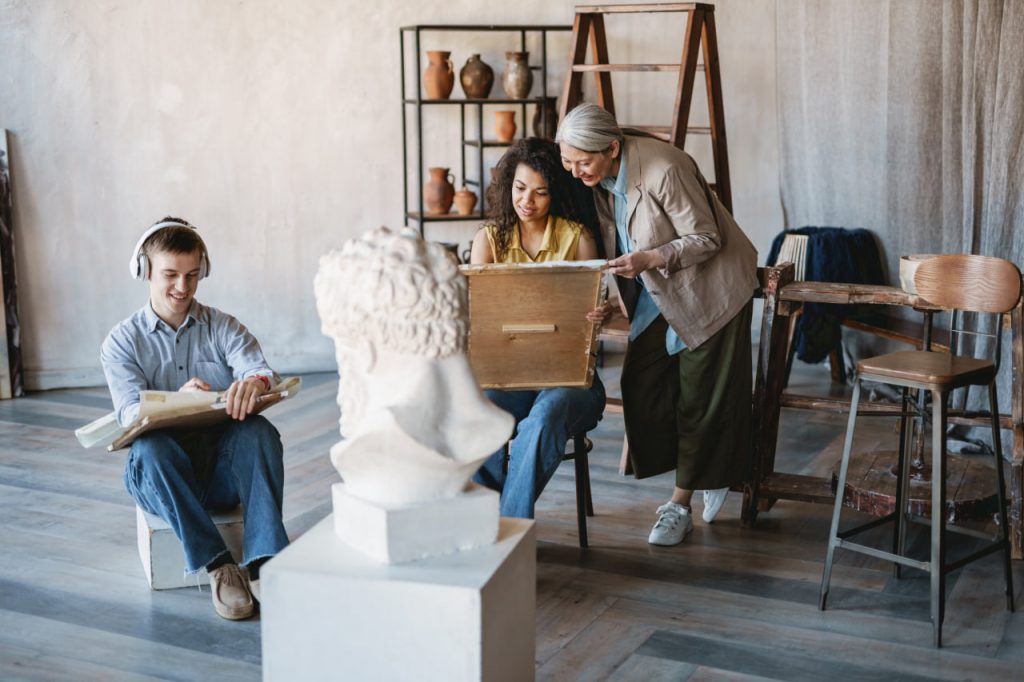Clay, Plaster, or Polymer? Choosing the Right Material for Your Art
When it comes to decorative modeling, one of the first and most important decisions you’ll make is choosing the right material. Each modeling medium—clay, plaster, and polymer—offers unique qualities that can either support or limit the direction of your creative work. Whether you’re sculpting a detailed figure, casting ornaments, or crafting everyday decor, understanding the strengths and limitations of each material will help you bring your vision to life more effectively.
Understanding Traditional Clay
Clay is one of the oldest and most versatile materials used in modeling and sculpture. It is made from natural earth components and comes in a variety of forms such as earthenware, stoneware, and porcelain. Most commonly used in decorative modeling are air-dry clay and ceramic clay, which can either be hardened naturally or fired in a kiln.
Clay is known for its plasticity and ease of manipulation, making it ideal for hand-building and wheel-throwing techniques. It allows for detailed sculpting and layering and is excellent for both fine and broad textural work. Air-dry clay is a popular choice for beginners due to its convenience—no need for firing—and its availability. However, it can be fragile when dry and is best used for small to medium decorative objects.
If you’re planning to work on pieces that will be handled often or exposed to elements, ceramic clay that can be kiln-fired and glazed is more suitable. It results in a more durable finish and can be colored in a wide variety of ways. Clay also gives artists a very tactile experience, which contributes to a strong connection between hand and material during the creative process.
Exploring the Flexibility of Plaster
Plaster, particularly plaster of Paris, is another commonly used material in decorative modeling. Unlike clay, plaster is a casting material. It is typically mixed into a liquid form and poured into molds where it sets quickly and hardens. This makes it ideal for producing highly detailed and repeatable designs, such as ornate trim, medallions, and decorative panels.
Plaster excels in projects where surface precision and clean lines are important. It captures fine detail well and dries to a smooth, matte finish that’s easy to paint. Because of its fast setting time, plaster allows artists to move quickly from one stage of a project to the next. However, this speed also means it requires quick work and careful planning.
One downside is its fragility—plaster can be brittle and chip easily, making it less ideal for objects that need to be durable or mobile. However, it shines in architectural decor, wall art, or ornamental objects intended to remain stationary. Beginners who want to explore reliefs or molded artwork often find plaster to be a rewarding medium.
The Versatility of Polymer
Polymer clay is a synthetic modeling material made from PVC resin and plasticizers. Unlike traditional clay, it doesn’t dry out in air and must be baked at low temperatures to harden. It’s sold in blocks, available in a wide array of vibrant colors, and can be mixed to create custom shades and effects.
Polymer clay is popular among crafters and artists for its accessibility and ease of use. It’s especially well-suited for small decorative items like jewelry, miniature sculptures, beads, and detailed ornaments. Its firmness allows for precision, and it holds textures and impressions beautifully. Once cured, it becomes lightweight yet durable, making it perfect for wearable or portable art.
One of polymer clay’s key advantages is the elimination of drying or curing stress—artists can work with it for hours without it cracking or hardening prematurely. It also requires minimal equipment: a standard home oven is enough for baking. Polymer does have its limitations in scale, as it’s best suited for smaller items. Larger pieces may require internal armatures or may be prone to sagging during baking.
Choosing the Right Material for Your Project
The best material often depends on the type of work you’re creating, your experience level, and the tools you have on hand. If your project involves hand-sculpted, organic forms and you enjoy working directly with your hands, clay offers the most traditional and tactile experience. For artists interested in high-detail cast objects or reliefs, plaster may be the best route. If you want color-rich, small-scale creations that are easy to bake at home, polymer clay is a flexible and beginner-friendly choice.
It’s also worth considering combining materials. For example, you might cast a plaster ornament and add clay embellishments, or create a polymer sculpture with embedded plaster details. Mixing mediums allows for richer textures and more complex designs.

